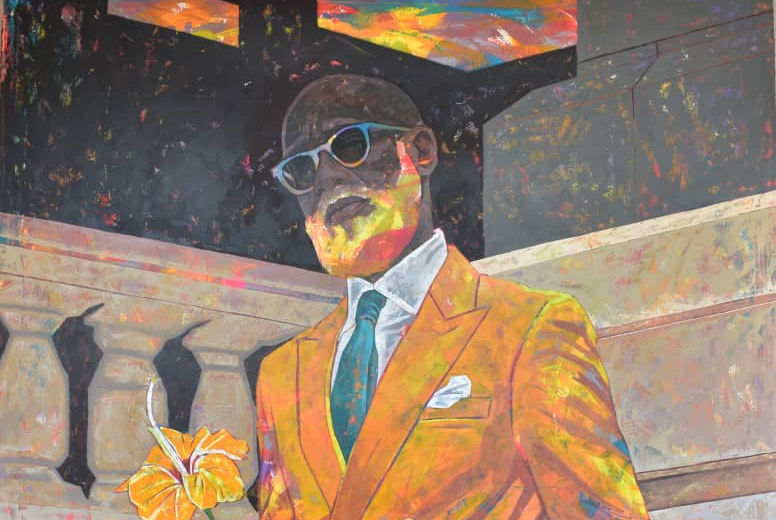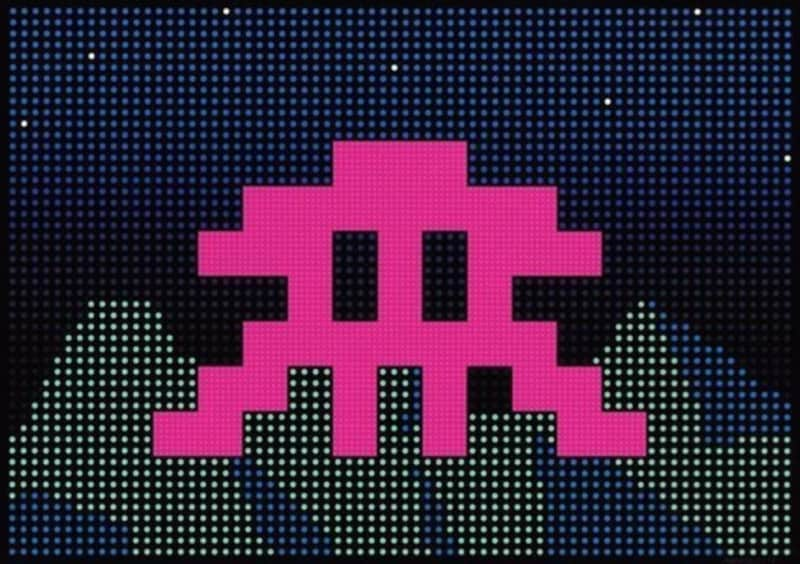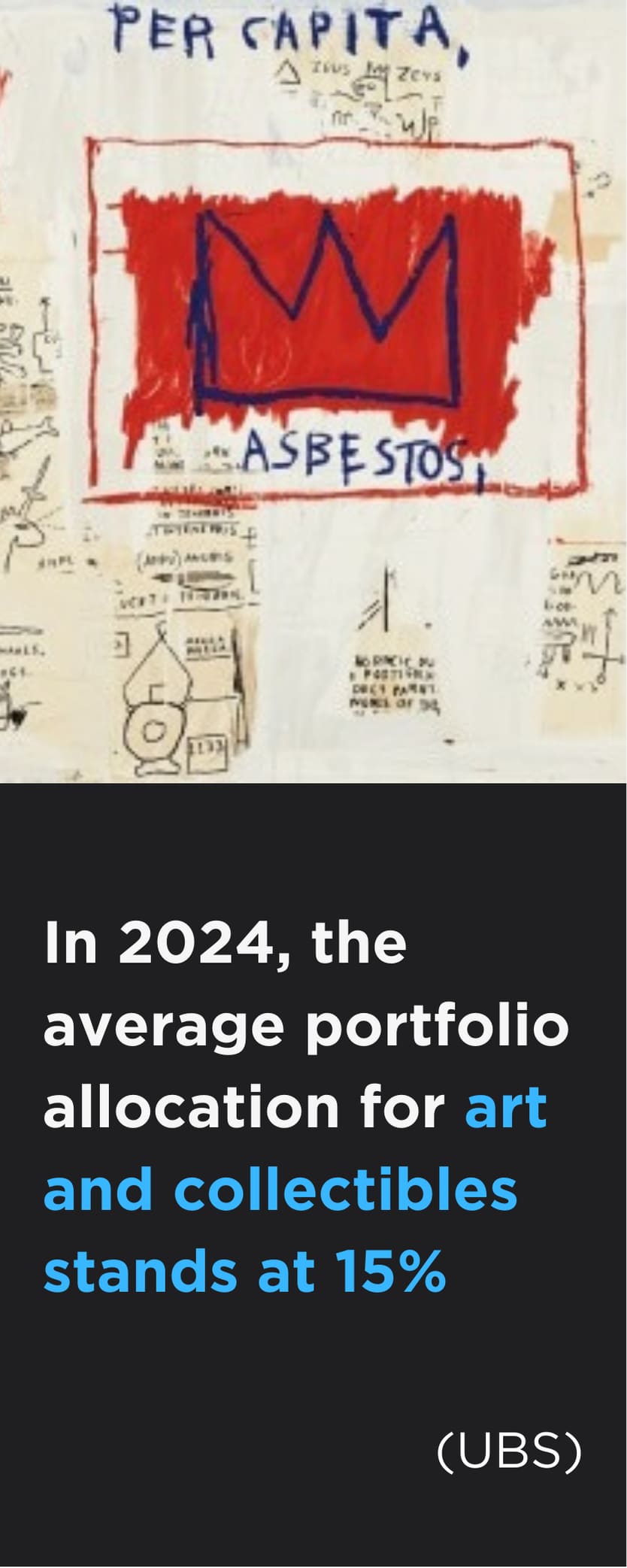These artists create unique, exciting works without the use of any brush at all. From a well known street artist who discovered his signature method whilst hiding from the police, to another who uses a palette knife to make his work. These creators prove that a paintbrush no longer dominates the process of making groundbreaking art.
Daniel Ametefe Kukubor
Daniel Ametefe Kukubor is a portrait painter who depicts stylish people who appear to pose for him. His works have an abstract nuance to them, with vibrant patches of colour, but the figures are painted with accuracy and detail. When we look at his work, we assume the artist achieved this result with the precise use of a paintbrush. However, in fact, he uses a squeegee and a palette knife to paint. Kukubor’s use of the device is impressive, and it adds to the dynamism of his work. It also creates a certain mystery around it – the beautifully rendered imagery now has a three-dimensional element to it which makes the artwork more enticing to look at. Through the use of a palette knife, we can almost witness the artist’s painterly process and the mixture of colour on the canvas.
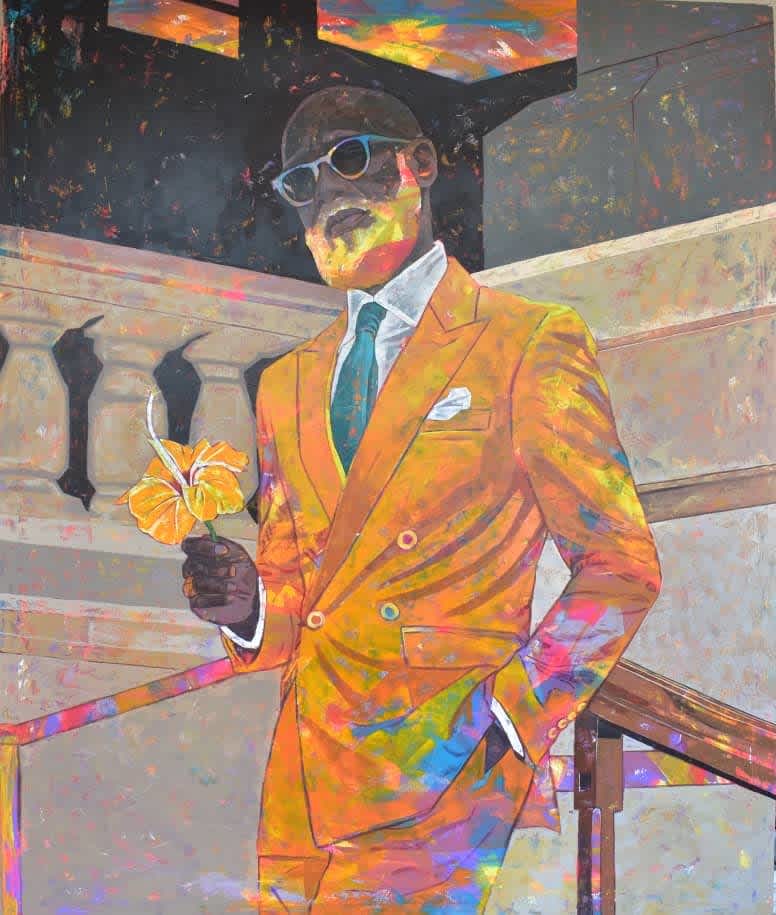
DANIEL AMETEFE KUKUBOR, "YELLOW HABISCUS", 2022
Banksy
Banksy has gained his “notoriety” over the years for his memorable graffiti which comments on art, politics and philosophy. At the age of 18, he was nearly caught “vandalising” public spaces by the police, as graffiti has not always bore the art status it does now. When this happened, Banksy hid beneath a dustbin van. In hiding, he noticed stencilled letters sprayed onto the van, and this inspired an idea in his mind. He knew he had to be quicker in the act, so then he decided that stencilling would be his new way of artmaking. The use of stencilling anonymises the artist, which is Banksy's intention; nevertheless, his style is hardly unrecognisable. With the lack of tactile involvement in the process and the use of additional material for improved speed of performance, Banksy has not only created a new technique of artmaking, but he has owned it since then. The use of stencilling has significantly contributed to his success, to the point where unsigned works of his are recognisable anytime, anywhere.
The Miaz Brothers
The Miaz Brothers are an artistic duo who were trained in traditional painting. Later in their career, they decided to break up with strict academic rules of making art, which resulted in their signature aesthetic as we know it today – a blurred, hazy appearance of the subjects they depict. To do this, the brothers use spray guns loaded with acrylic paint, with which they map out the qualities of their figures, staying true to colour, light and shade, but avoiding precise lines and definition. It is possible that this allows them to produce their work faster than if using a paintbrush, but that does not make their process less sophisticated than a traditional one. To the contrary – the brothers build upon their proficiency in academic painting methods in order to employ an alternative one, paving the way for other artists to explore different ways of artmaking. This special technique makes for paintings which appear out of focus, but which appear to come into detail when looked at for long enough.
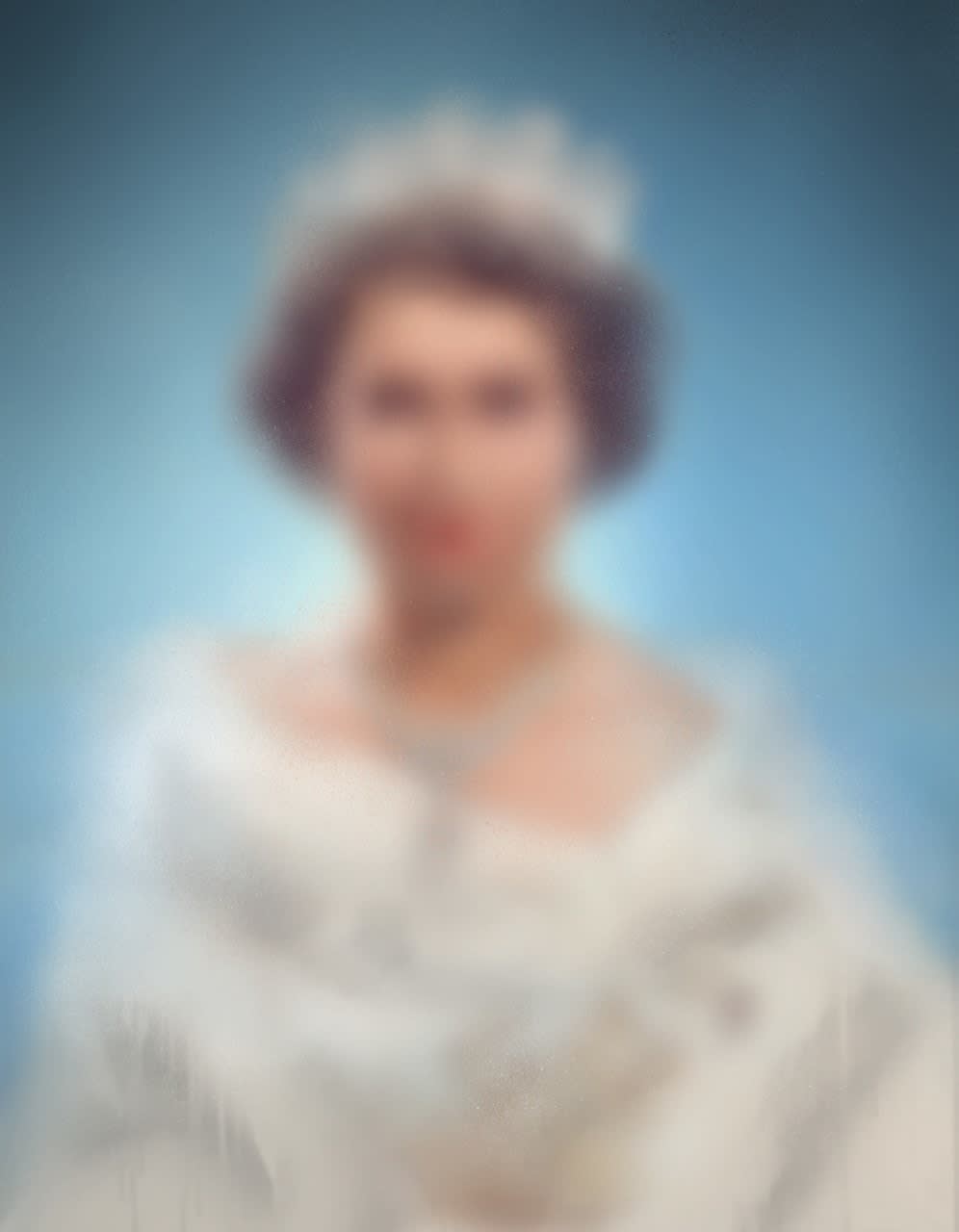
THE MIAZ BROTHERS, "ROYAL BLUE, 2022
Jack Kabangu
Jack Kabangu is a painter whose subject matter is gloomy figures situated in negative space. What’s fascinating about his process is that he uses a finger-painting technique to make his art. Through this tactile way of painting, he establishes a personal connection with the work. The evidence of the artist’s hand creates an interesting texture, which adds to the human quality of Kabangu’s paintings. This makes his art easy to empathise with. We think about the times when we finger-painted as children, and we feel a reconnection with a youthful playfulness when thinking of Kabangu’s process. As a result of the finger-painting, his work communicates liveliness and records the movement of the artist while he was making it. This, coupled with the unique aesthetic, makes for a one-of-a-kind artwork.
Invader
Invader is a French street artist who is best known for his pixelated mosaics, inspired by video games and vintage graphics. Invader’s technique is quick and discrete, and he works with a team who assist in the production of his art. His team fixes multi-coloured tiles to walls, using cement or glue to keep them together. The combination of the square blocks of colour together create image which appears as if on a screen of a technological device. Invader’s way of working celebrates the freedom of expressing creativity in art and innovative techniques, and it shows how an artist can compose an image without always sticking to tradition. The process is fascinating, and the result is a thought-provoking work of art. Invader’s work is associated with a Duchampian “ready-made” style of making art, as he reproduces his designs with tiles across the streets of Paris and other major cities. The way his work is put together opposes machines that replace the artist’s hand, as every coloured tile is carefully put in place. The care and attention which go into the creation of Invader’s work is demonstrated in it– although with a simple appearance, it has a complex history.
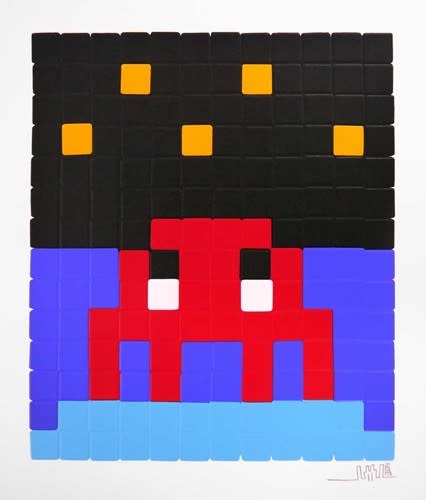
INVADER, "SPACE ONE" (RED), 2013
Daniel Ametefe Kukubor, Banksy, The Miaz Brothers, Jack Kabangu and Invader are examples of an artistic community which experiments with unusual methods of making art. There is always a story behind an artist’s chosen way of making their work. A clever technique like putting together coloured tiles, or using spray guns to paint is evident of the diversity in working methods contemporary artists enjoy. These alternative ways to making art add to the story of the contemporary art world and to telling art history, and widen our understanding of an artistic process. Our current visual culture is full of vibrancy which emanates from artists who think outside the box when they work. Ultimately, they provide society with a colourful array of artwork to discover, or, in simpler terms – visual fun.
